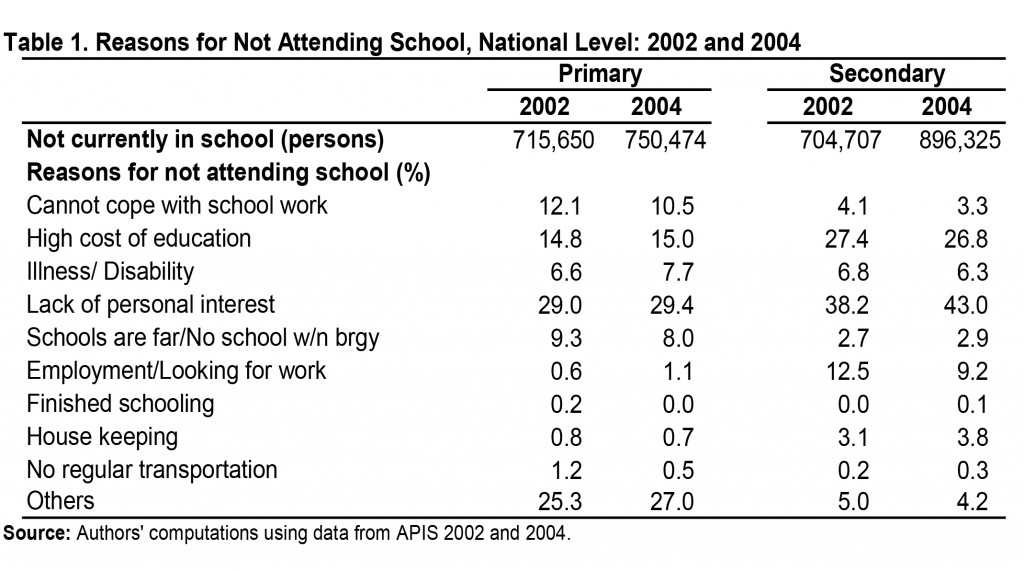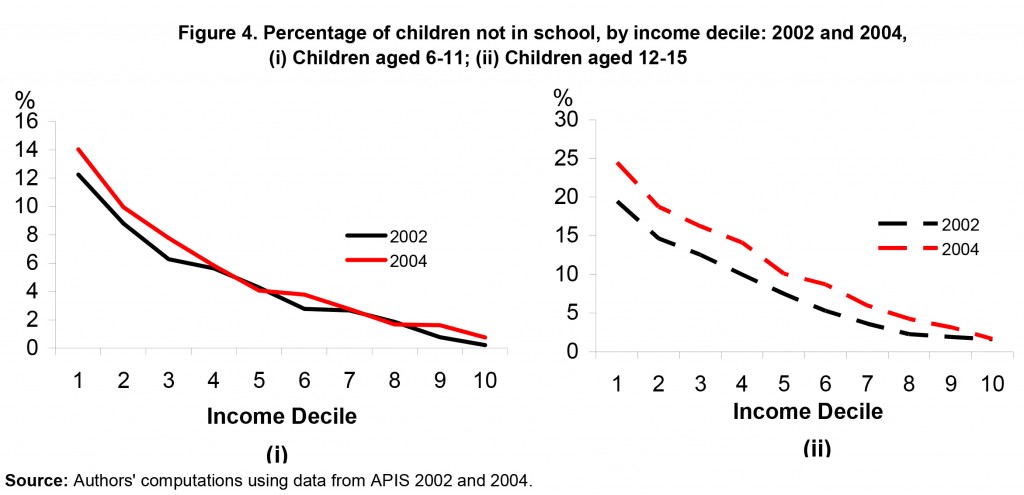Did you know that, depending on your circumstances and your future goals, the TVL Track in senior high school could actually be the better option?
TVL stands for Technical-Vocational-Livelihood, and the TVL Track is one of the two tracks offered in senior high school; the other one is the Academic Track. Simplistically speaking, the Academic Track is supposed to prepare junior high school students for college, while the TVL Track is supposed to prepare junior high school students for employment.
However, there’s more to the TVL Track in senior high than meets the eye. The following article expounds on 8 reasons why senior high school students must not discount and must, in fact, consider the TVL Track.
WRI SHINES
Senior High Integration for Newly Empowered Students

To Inquire
Visit WRI Colleges Naga, WRI Colleges Iriga, or WRI Colleges Goa.
WRI Colleges Naga Address:
WRI Colleges, Concepcion Grande, Naga City
Or call: (054) 472 8733
1. The TVL Track can get you employed right after senior high school.
After 2 years of senior high TVL you’ll have earned employable skills and will thus be eligible to work.
- Learn more
During TVL Senior High, you can earn Certificates of Competency (COCs) and National Certifications (NCs) for skills learned according to TESDA training regulations. TVL Track senior high students will also have the opportunity to gain actual hands-on experience through school-industry partnerships for technical-vocational courses.
But how can TVL Senior High graduates be sure they could get employed after senior high? Well, according to the Official Gazette, the official journal of the Republic of the Philippines:
DepEd has entered into an agreement with business organizations, local and foreign chambers of commerce, and industries to ensure that graduates of K to 12 will be considered for employment.
There will be a matching of competency requirements and standards so that 12-year basic education graduates will have the necessary skills needed to join the workforce and to match the College Readiness Standards for further education and future employment.
Entrepreneurship will also be fostered in the enhanced curriculum, ensuring graduates can venture into other opportunities beyond employment.
- What this means to you
After the TVL Track in senior high, you can get employed by a company or can be self-employed because of the skills you’ve acquired.
If you have no desire to go to college and simply want to earn money to support yourself and your family right after high school, the TVL track is the best option. It will let you do that.
Conversely, if you do want to go to college – immediately after senior high or eventually, after some time – the TVL track still makes sense. You can use the skills you’ve acquired through the TVL Track to earn money for college.
Source:
“The K-12 Basic Education Program”, Official Gazette. http://www.gov.ph/k-12-old/comment-page-7/. Accessed: March 25, 2016.
2. Not everyone CAN or WILL go to college.
Out of every 100 Grade 1 pupils, only 14 are able to go and finish college.
- Learn more
This statistic was part of the Commission on Higher Education or CHED’s 2008 data, as cited in the explanatory note for the Free College Entrance Exam Act. To quote,
Based on the Commission’s 2008 data, out of 100 Grade 1 pupils, only 66 finish Grade 6 and only 58 of them enroll in first year high school. Of the 58, only 43 finish high school. However, only 23 of the 43 who finished high school enroll in college and only 14 of the 23 eventually graduate from a college.
Fourteen out of every hundred Grade 1 pupils – that’s incredibly low! In other words, we have an extremely high attrition rate – 86% – in our formal education system.
This 2008 data is borne out by recent CHED graduation statistics. For the Academic Year 2010-2011, the Higher Education Graduation Rate (i.e. the percentage of 1st year baccalaureate students able to graduate) is 56.75%. In other words, only a little over half of those who enroll in first year college get to graduate.
What this means:
College is not for everyone. While everyone may want to go to college – and that’s highly improbable – of those who do want to go to college, not everyone can or will be able to do so.
To be sure, the idea of going to college must seem more attractive than technical-vocational options. However, the reality is that less than half of Grade 1 pupils actually survive high school, only less than a quarter even attempt to go to college, and only around 14% of those originally in grade 1 survive college to graduate. Further proof that not everyone will or can go to and graduate from college.
- What this means to you
Before senior high school, give yourself an honest assessment. Answer this question; is college really for you? If you think you can’t or won’t be able to go to college – much less graduate college – then you have another option: the technical-vocational route.
In that case, the TVL Track of senior high makes better sense than the academic track.
Sources:
“Explanatory Note, An Act Providing for Free College Entrance Examinations to Underprivileged Public High School Students Belonging to the Top Ten Percent (10%) of the Graduating Class”, S.B. No. 3369, Fifteenth Congress, Third Regular Session, Republic of the Philippines. Senate of the Philippines, Pasay City. https://www.senate.gov.ph/lisdata/1476012283!.pdf. Accessed: March 25, 2016.
3. Not everyone SHOULD go to college.
As earlier mentioned, while college is always an attractive option, not everyone can or will go to college. Nor should everyone go to college, apparently.
- Read more
You know how there are things that we can realistically aspire to and things that are just much too out of reach (at least immediately). When deciding whether or not you should go to college, you should give yourself an honest assessment and ask yourself whether going to college belongs to the former (realistic and possible) or to the latter (at the moment, unreachable). In your assessment, use the following criteria, suggested by WRI Colleges founder Efren Daniel de Leon:
Galing Mo or IQ
1. Galing Mo or IQ
First, is college something you can realistically go for given your natural aptitude? If you don’t like studying, can you force yourself to study just for the sake of graduating? Be honest in your assessment; you may even consult your junior high school guidance counselor. Ask yourself, is college something you can realistically do?Remember that college is not the end-goal; it is only supposed to help prepare you for the career you want later on. Now, if you don’t like academics and there’s another way you can prepare yourself for the career you want, shouldn’t you consider that instead?
- Hilig Mo or EQ
2. Hilig Mo or EQ
Second, is college something that truly appeals to you or that really interests you? While income potential is a good consideration, interest is even more important. If you like what you do, you’re more likely to succeed in that field. So interest is crucial. Ask yourself, are you interested in college or not? Moreover, is college really the way to a career you’d truly like?
- Bulsa Mo or Financial Capacity
3. Bulsa Mo or Financial Capacity
Finally, is college possible given the current state of your (or your family’s) finances? Consider not only the cost of tuition but the miscellaneous costs – books, uniforms, projects, equipment, etc. Now, is college something you can afford – at least at this point in time?
Indeed, just like CHED Chairman Dr. Patricia Licuanan said in an interview published in the The Standard,
We don’t think that every student really should go to college. There are very good programs in the technical and vocational areas or in the area of middle-level skills, and you get jobs when you finish these programs. That option of going into technical-vocational and middle-level jobs is attractive, but in our culture, we have that notion that everyone should get a college diploma. I don’t think that’s necessary.
- What this means to you
If, after assessing yourself according to the three criteria mentioned above, you realize that college is not for you, then your senior high track should be obvious. The TVL Track is offered to provide inclusive growth and development opportunities for those to whom college is not the right path.
Sources:
August 10, 2015. John Paolo Bencito. CHED: “College not for everyone”, The Standard. http://manilastandardtoday.com/news/-main-stories/top-stories/184240/ched-college-not-for-everyone.html. Accessed: March 26, 2016.
Bakit sa WRI ko pag-aaralin ng TVL ang anak ko?
WRI Colleges is a TESDA-accredited institution that offers many of TESDA’s training programs.
Senior high students enrolled in WRI will be able to collect Certificates of Competency and National Certifications while still in senior high school.
Click Here for more reasons you should choose WRI Senior High.
WRI Colleges has branches in Naga, Goa and Iriga.
To Inquire
Visit WRI Colleges Naga, WRI Colleges Iriga, or WRI Colleges Goa.
WRI Colleges Naga Address:
WRI Colleges, Concepcion Grande, Naga City
Or call: (054) 472 8733
4. Lack of money is one of the top reasons students drop out of school.
A 1995 paper by Barsiaga (as cited in Nava, 2009) shows that most of school leavers come from low-income families “whose parents had little or no education, and who were unemployed or had jobs that gave them little or irregular income.“
Nava’s own study exploring the reasons primary and secondary school students leave school yields specific reasons like work (especially for male respondents), no money for projects, no money for school contributions, no pocket money for lunch, and no money for transportation.
- Learn more
Then, a 2008 discussion paper assessing basic education in the Philippines, using 2002 and 2004 Annual Poverty Indicators Survey (APIS), indicates that high cost of education is one of the reasons primary (14.8%) and secondary (27.4%) school students are not in school. Another significant reason, especially among secondary school students, is employment or looking for work (12.5%).

The authors also suppose that, for some of the survey subjects, “Lack of personal interest” could actually be a euphemism for lack of financial resources. Some of the survey respondents could have stated lack of personal interest as their reason for not being in school because they had not wanted to admit that lack of financial resources is the reason they were not in school. To support this hypothesis, the study points to data that shows the percentage of primary and secondary school age children not in school decreases with household income.

In fact, further exploration of the 2002 and 2004 APIS data shows that an average of 69.5% of those in the primary age group who were not attending school and an average of 62.8% of those in the secondary age group who were not attending school belong to the bottom 30% of the income distribution.
This means that a lot of Filipinos drop out of elementary school and high school because they do not have the financial resources to stay in school. It is logical to suppose, therefore, that a lot of Filipinos are likely not attending college, cannot stay in college or will not even try for college because of economic reasons.
- What this means to you
If you are one of the many for whom going to college seems like an insurmountable feat because you lack the financial resources to do so, the TVL Track is a viable solution. After TVL senior high, if all you wanted to do is work and earn money to support yourself and your family, you can. If what you want to do is go to college, you still can. Use your TVL Track to gain skills you can use to work and earn money, then use the money to pay for college.
Will it be hard? Of course it will be. But at least the TVL Track now gives you another option aside from simply quitting school because you don’t have the financial means to go to college anyway. It also gives you better employment options; after senior high – when you join the workforce – you will have skills that the labor force market actually values and can actually use.
Source:
December 2009. Fe Josefa G. Nava. “Factors in School Leaving: Variations Across Gender Groups, School Levels and Locations”, Education Quarterly , Vol. 67 (1), 62-78. U.P. College of Education.
May 2008. Dalisay S. Maligalig and Jose Ramon G. Albert. “Measures for Assessing Basic Education in the Philippines”, Discussion Paper Series No. 2008-16. Philippine Institute for Development Studies.
5. The TVL Track provides preparation for the bulk of occupations OFWs hold abroad.
Approximately three quarters of the Filipinos abroad hold jobs for which the TVL track may prepare you.
- Learn more
You see, based on the 2014 Survey on Overseas Filipinos (SOF), out of the Overseas Filipino Workers surveyed:
• 32.8% are in labor and unskilled occupations
• 12.8% are in trade or related work
• 12.5% are plant and machine operators and assemblers
• 16.5% are in the service, shop and market sales industry
In total, that’s 74.6% of the OFWs surveyed. That’s the bulk of the occupations waiting for Filipino workers abroad!
Even if we randomly halve the percentage for the service, shop and market sales industry (supposing half of the jobs in this sector probably require a college degree), still around 66.5% of the OFWs surveyed occupy positions that TVL senior high school graduates will be better equipped to fill – especially upon gaining some on-the-job experience during and after senior high school.
- What this means to you
If your goal is to work abroad, then the TVL Track senior high can be an efficient shortcut.
The table above shows that most Filipinos are employed in the TVL sector abroad, so why not use your time in senior high to acquire the skills you’ll need for overseas employment later on?
Source:
TABLE 1.4 Distribution of Overseas Filipino Workers by Major Occupation Group, Sex and Area 2014.pdf Statistical Tables on Overseas Filipino Workers (OFW): 2014. https://psa.gov.ph/content/statistical-tables-overseas-filipino-workers-ofw-2014. Accessed: March 25, 2016.
6. College graduates and professionals take TESDA certification training courses.
Why wait until after college to collect Certificates of Competency and National Certifications that will make you more employable when you can get them now, while you’re in senior high?
- Learn more
According to former Technical Education and Skills Development Authority (TESDA) Director General, Joey Villanueva (as cited in a 2013 article published on The Philippine Star),
… a great bulk of those who took vocational training courses and certification with the agency for the past years were college graduates and professionals.
College graduates and professionals take up vocational training courses to gain national certifications for technical skills required for employment, specially employment overseas. Villanueva cites examples like nurses taking up a course in medical transcription and electrical engineers taking up an electric installer course.
- What this means to you
Even if you want to finish college, earn a degree and become a professional, it doesn’t necessarily mean you have to choose the Academic Track in senior high. This is especially true if you want a career in ICT or engineering later on, where certain skills certifications are deemed enormously valuable.
Indeed, it all boils down to the fact that you need skills – preferably certified – in order to be gainfully employed. Even college graduates need such skills. So why not use your time in senior high school to acquire them?
For this reason, the TVL Track is a great option. TESDA training courses are integrated into the TVL Track. So while in senior high, you can gain the requisite COCs (Certificates of Competency) and NCs (National Certifications) that will enhance your employability later on. So right out of senior high, you’d have the certifications that would land you the better jobs.
Source:
August 25, 2011. Mayen Jaymalin. “TESDA: More college graduates taking up vocational courses”, The Philippine Star. http://www.philstar.com/education-and-home/719848/tesda-more-college-graduates-taking-vocational-courses. Accessed: March 25, 2016.
7. There is a positive employment outlook for TVL track senior high school graduates.
In the Philippines and abroad, there is and will continue to be demand for semi-skilled TVL Track senior high graduates and skilled TVET graduates.
- Learn more
According to Department of Labor and Employment or DOLE Sec. Rosalinda Dimapilis-Baldoz, there’s a high unemployment rate among the youth (age 15-24) in the Philippines.
Almost half of the Philippines’ unemployed are the youth, aged 15 to 24 years old. The April 2015 LFS still validates this, with our youth unemployment rate still more than twice the national rate.
The TVL Track in senior high could change this. A TVL Track senior high graduate is supposed to have employable skills, and the skills he or she will learn in senior high are actually aligned with the demands of the labor force market. Again, according to Sec. Dimapilis-Baldoz,
In an era of regional and global integration, the labor market offers opportunities to senior high school graduates here in the Philippines and in many parts of the world. Our JobsFit Report, 2013-20120, tells us a number of in-demand and hard-to-fill occupations for TVET graduates. On its part, the Phil-JobNet, the government’s official job portal, registers thousands of occupations needing graduates of TESDA courses with national certifications…
… There is an overall positive outlook for the Philippine labor market in the area of agribusiness, construction, manufacturing, and services sectors.
- What this means to you
If you don’t want to be another unemployed statistic, you must consider the TVL Track. The TVL Track really is the best preparation for those whose priority is finding work after senior high graduation.
Source:
Secretary Rosalinda Dimapilis-Baldoz. “Employment Outlook for Senior High School Graduates of TVET Track”, Speech in the 14th Human Resource and Skills Development Conference. http://www.dole.gov.ph/speeches/view/71. Accessed: March 25, 2016.
8. There will be great demand for TVL Track senior high school graduates in Naga.
If you want to get a job in Naga right out of senior high school, consider the TVL track.
- Learn more
To date, the following are some of the planned or ongoing infrastructure construction in Naga (taken from a Bicol Mail article last February):
- a new 5-storey building near the JMR Coliseum to house an additional 3,000 more slots for IBM
- Robinsons Place Naga to feature a BPO Center with its own building adjacent to the mall
- SM City Naga to construct an additional 9-storey building at an adjacent lot with four floors allocated for BPO locators
This tells us two things. The most obvious is that Naga City is gradually transforming into a BPO hub that will employ thousands of agents. The second but perhaps less obvious is that in Naga, there is and there will be great demand for skilled construction workers.
Current construction activities in Naga is already employing many construction workers. If the BPO industry in Naga continues to thrive, more BPO players will come and more buildings will need to be built to house these new players. Then of course, as a result of greater BPO opportunities in Naga, a lot of people from surrounding areas are likely to move here. This means there will be greater demand for housing, housing that – again – will need to be built.
As a result of all these current and projected construction activities, TVL Track senior high graduates (especially those who chose a senior high school that teaches construction-relevant skills such as construction painting, tile-setting and masonry) in Naga City can be fairly certain that jobs will be available in Naga after graduation.
- What this means to you
This means that after TVL Track senior high, you 1) can be fairly certain that there will be employment opportunities waiting for you, and 2) you won’t have to leave Naga to take advantage of such employment opportunities.
What if you don’t necessarily want to work in construction? Well after the TVL Track in senior high, you could continue on to take a TESDA call center training course and get the proficiency required to work as a call center agent. This way, right after senior high school and 100 hours of skills training, you can be gainfully employed in the BPO sector.
Source:
February 25, 2016. Jose B. Perez (ed). “Naga’s economic might getting stronger”, Bicol Mail. http://www.bicolmail.com/2012/?p=24774. Accessed: March 26, 2016.
Conclusion
The TVL Track in senior high is a viable option, and it is an option no one must discount for the 8 reasons stated above. No one could have expressed it better than former TESDA Director General Joel Villanueva when he said (with regards to technical vocational education and training),
I know the idea of a college or university education is always appealing. But TVET is more affordable, hands-on, and the path to a good job is shorter.
The exact same thing could be said for the TVL Track in senior high school.
The TVL Track is definitely more “affordable, hands-on, and the path to a good job is shorter.”
It is affordable because it is offered in public schools as well as in the more accessible (i.e. affordable) private schools. Such accessible private schools do not charge more than the DepEd senior high voucher. Case in point: WRI Colleges – the TVL Track Senior High – where no additional tuition fee is required of senior high school students.
It is hands-on because the TVL track teaches practical skills and comes with industry partnerships that will let senior high students gain on-the-job experience.
And the path to a good job is shorter because, after gaining employable skills, a TVL Track senior high graduate can seamlessly transition from school to the workplace here or abroad.
Source:
March 2, 2013. “There’s always the tech-voc option, Villanueva tells graduates”. http://www.tesda.gov.ph/News/Details/285. Accessed: March 26, 2016.
Should You Go for the TVL Track?
The 8 things listed above provide 8 good reasons why you must consider the TVL Track in senior high. If you’re still torn between the Academic Track and the TVL Track in senior high school, however, then do this.
Start with an assessment of your career goals. After all, senior high is supposed to be a preparation for your future career path. Ask yourself: what do you want to be when you grow older? This is something you must have answered unthinkingly when you were in kindergarten. Give it some serious thought now.
Got your answer? With the question of your future career goals settled, it should be easy to choose between the Academic and the TVL senior high tracks. You just need to choose the track that prepares you best for the future you envision and can realistically attain for yourself.
And if such a future involves you getting employed whether here or abroad, as soon as possible and without the need to go to college (which you may not be able to afford anyway), there’s no question that the TVL Track is the better option for you.
Note:
If you are ready to consider the TVL Track as a viable senior high path, check out WRI Colleges – the TVL Track Senior High School – for these reasons.

To Inquire
Visit WRI Colleges Naga, WRI Colleges Iriga, or WRI Colleges Goa.
WRI Colleges Naga Address:
WRI Colleges, Concepcion Grande, Naga City
Or call: (054) 472 8733




